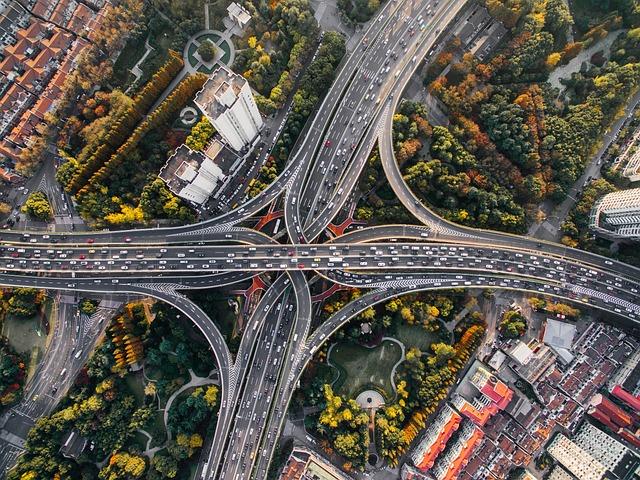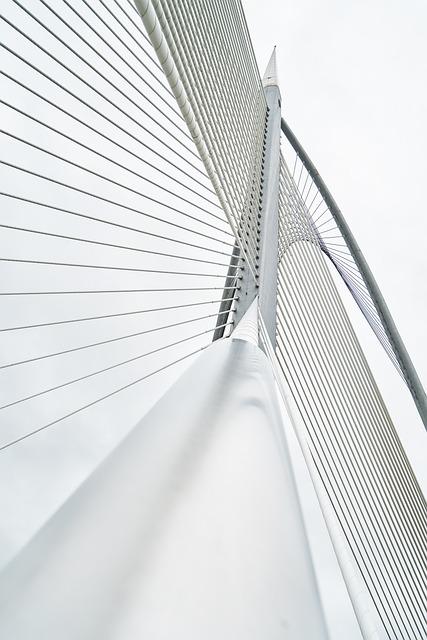In a world where the backbone of economic progress is often framed by the robustness of its infrastructure, Pakistan stands at a pivotal crossroads. With an economy rich in potential yet challenged by the inefficiencies of its existing systems, the nation is embarking on an ambitious journey to revamp its infrastructure to catalyze growth and innovation. From bustling urban centers to remote rural areas, the reach of improved roads, bridges, and communication networks promises to unlock opportunities previously constrained by logistical limitations. As Pakistan redefines its blueprint for development, this article delves into the strategies, challenges, and transformative potential of infrastructure renewal in shaping a prosperous future. Join us as we explore how revitalizing its foundational framework may not only enhance economic performance but also uplift communities and bridge divides in this diverse and dynamic country.
Embracing Sustainable Solutions for Modern Infrastructure Development
In an era marked by climate change and resource scarcity, Pakistan’s commitment to integrating sustainable practices into its infrastructure development is not just a necessity but an opportunity for innovation. By leveraging renewable energy resources such as solar and wind power, the nation can reduce its reliance on fossil fuels while creating jobs and stimulating local economies. Sustainable materials like recycled steel and green concrete are gaining traction, allowing construction projects to minimize their environmental footprint while enhancing structural resilience. The implementation of smart technologies can further optimize energy use in urban settings, leading to improved efficiency and decreased operational costs.
Public-private partnerships are crucial for propelling these initiatives forward, facilitating investment in cutting-edge technologies that drive ecological progress. Such collaborations can enable the development of green urban spaces, integrating nature into infrastructure design and promoting biodiversity within city areas. The priorities for infrastructure projects should include a focus on water conservation, waste management, and transportation systems that reduce emissions. These measures not only contribute to sustainable urban development but also attract international funding and expertise, positioning Pakistan as a leader in environmentally friendly infrastructure practices in the region.

Enhancing Connectivity: The Backbone of Economic Progress
As Pakistan strides into a new era of economic development, the emphasis on robust infrastructure becomes increasingly prevalent. Modern highways, railways, and airports are not mere conduits for travel and transportation; they are vital arteries facilitating trade and commerce. An efficient transportation network can reduce shipping times, lower costs, and enhance competitiveness on a global scale. Equally important is the expansion of digital infrastructure. With the rise of e-commerce and digital services, investing in high-speed internet and telecommunications is essential to connect businesses and consumers, ultimately driving growth and fostering innovation.
Investment in infrastructure not only enhances connectivity but also stimulates various sectors. By ensuring that remote areas are accessible, we unlock potential in agriculture, tourism, and small businesses, empowering local communities. To gauge the importance of these developments, consider the following:
| Infrastructure Type | Economic Impact |
|---|---|
| Transportation Networks | Reduces logistics costs, boosts trade efficiency |
| Digital Connectivity | Enables e-commerce growth, fosters tech startups |
| Energy Supply | Supports industrial growth, attracts foreign investment |
With a clear focus on revitalizing these foundational elements, Pakistan can pave the way for sustainable economic progress. Collaborative efforts between the public and private sectors will amplify the potential benefits of infrastructure development, ensuring that advancements resonate through all levels of society. The future is bright when connectivity is strengthened, as it lays the groundwork for a more prosperous economy.

Public-Private Partnerships: A Model for Effective Investment
The landscape of infrastructure development in Pakistan is on the cusp of transformation, fueled by the growing recognition of public-private partnerships (PPPs) as a catalyst for sustainable economic growth. These collaborations enable the government to leverage the expertise, efficiency, and capital of the private sector while ensuring that public services are delivered with maximum effectiveness. By tapping into the innovative capabilities and technical know-how of private enterprises, PPPs can address the pressing needs in various sectors, such as transportation, energy, and healthcare. The integration of private investment not only alleviates the financial burden on public coffers but also ushers in a new era of transparency and accountability in project execution.
As this model gains traction, several successful案例 emerge that showcase the viability and benefits of PPPs. For instance, transportation projects like the Karachi-Lahore Motorway demonstrate how such partnerships can expedite infrastructure development while adhering to strict timelines. The table below highlights key aspects of successful PPP projects in Pakistan:
| Project | Sector | Investment (in million USD) | Completion Year |
|---|---|---|---|
| Karachi-Lahore Motorway | Transportation | 2,000 | 2020 |
| Lahore Orange Line Metro Train | Mass Transit | 1,600 | 2019 |
| Neelum-Jhelum Hydropower Project | Energy | 2,400 | 2018 |
Engaging with the private sector through these partnerships not only accelerates project delivery but also fosters a culture of innovation and competition. For Pakistan, embracing PPPs as a strategy is crucial in creating a resilient infrastructure foundation that can support economic diversification and enhance the overall quality of life for its citizens. The future of the nation’s infrastructure rests on the ability to harmonize public goals with private sector efficiencies, ultimately paving the way for a robust and thriving economy.

Technological Innovation in Infrastructure: A Roadmap for Future Readiness
The future of infrastructure in Pakistan hinges on the integration of cutting-edge technologies that promise to elevate the nation’s economic landscape. Leveraging smart city initiatives, the country can adopt a modular approach to urban planning that incorporates IoT connectivity, renewable energy, and data-driven decision-making. Here are key components that can drive this transformation:
- Smart Transportation Systems: Integrating AI and machine learning to enhance traffic management and reduce congestion.
- Green Infrastructure: Utilizing sustainable materials and technologies to create energy-efficient buildings and public spaces.
- Digital Governance: Implementing e-governance solutions to streamline public services and improve citizen engagement.
Investment in infrastructure must also be aligned with digital equity to ensure that all regions of Pakistan benefit from technological advancements. This requires a comprehensive strategy focused on broadband accessibility, enhancing public-private partnerships, and fostering innovation ecosystems across provinces. A framework for evaluation could include the following metrics:
| Metric | Description | Importance |
|---|---|---|
| Infrastructure Resilience | Adaptability and robustness of materials and systems against environmental changes | Ensures long-term sustainability |
| Innovation Adoption Rate | Speed and effectiveness of integrating new technologies in public projects | Pivotal for modernizing infrastructure |
| Community Impact | Assessment of how infrastructure developments improve quality of life | Essential for social acceptance and support |
The Conclusion
As the sun sets on the horizon of Pakistan’s vast landscape, casting a golden hue over its cities and provinces, it becomes evident that the nation stands at a pivotal crossroads. Revamping infrastructure is not merely about concrete and steel; it symbolizes a commitment to progress, sustainability, and unity. With each bridge constructed and each road paved, Pakistan moves closer to weaving a tapestry of economic growth that embraces its rich cultural heritage while fostering innovation and opportunity.
The path ahead may be fraught with challenges, from funding intricacies to bureaucratic hurdles. Yet, the resilience of the Pakistani spirit, coupled with strategic investments and inclusive planning, holds the promise of transformation. As stakeholders from all sectors rally together, fostering collaboration and community engagement, the dream of a modernized infrastructure begins to take shape.
In this journey, it is essential to remember that rejuvenating infrastructure is a shared responsibility, a national endeavor that, when embraced collectively, can pave the way for a brighter, more prosperous future. As Pakistan charts its course toward economic growth, may it do so with an unwavering vision and the belief that the best is yet to come—a journey of renewal, resilience, and rebirth, destined to elevate every corner of the nation.



